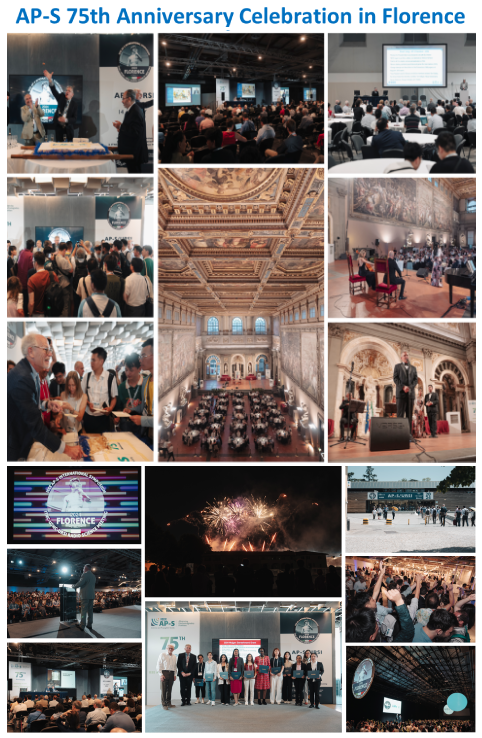
Dr. Nicholas E. Buris
President, NEBENS
Deer Park, IL
Nick Buris received the diploma of Electrical Engineering in 1982 from the National Technical University of Athens, Greece and the Ph.D. in EE from the North Carolina State University, in 1986 working on microwave propagation in inhomogeneous thin ferrite films.. In 1986, he was a visiting professor at NCSU working on space reflector antennas for NASA. In 1987 he joined the faculty of the ECE dept. at UMass, Amherst. His research work there focused on microwave magnetics, phased arrays printed on dielectric and ferrite substrates and broadband antennas. In the summer of 1990 he was a faculty fellow at the NASA Langley Research Center working on calibration techniques for dielectric measurements and an ionization (plasma) sensor for an experimental reentry spacecraft.
In 1992 he joined the Applied Technology organization of Motorola’s Paging Product Group and in 1995 he moved to Corporate Research to start an advanced modeling effort. At Motorola he was until recently a director, managing large projects on antenna product design, rf propagation measurements, RFID’s, mm waves and the development of proprietary software tools for electromagnetic and system design and optimization. In 2009 he founded NEBENS, a small company focusing on cross layer design aspects (antenna, coverage and algorithms) of Smart Antenna based wireless systems.
Nick is an IEEE fellow and a distinguished lecturer of the IEEE Antennas and Propagation society. He is a member of the IEEE Microwave Theory and Techniques technical program committee and has been member and chair of various IEEE and Telecommunications Industry Association (TIA) standards committees on antennas and RF exposure.
Cross-Layer Design of Smart Antenna Systems
Smart Antenna Systems use the additional degrees of freedom offered by their multiple antennas to exploit, among other things, multipath in the propagation environment. Therefore, by construction, antenna design of smart antenna systems cannot be assessed by simple performance metrics such as gain, polarization and efficiency alone. At a minimum, performance has to be considered in the context of the nature and degree of the multipath. Capacity, the maximum possible throughput, is an appropriate performance metric when the antennas are properly combined with their propagation environment but nothing more is known about the system. When, additionally, the specific Link and Media Access Control (MAC) layer characteristics of the system are taken into account, the actual throughput of the communication link becomes a more appropriate performance metric. A Cross-Layered design approach of Multiple Input Multiple Output (MIMO) antenna systems is presented in this talk. An electromagnetics exact formulation from baseband-to-baseband of a Smart Antenna System is given. The formulation consists of full wave analyses of the antenna arrays involved on both sides of the link and a plane wave decomposition for the propagation environment. Subsequently, the baseband signals are fed into link simulators, specific for each system of interest, to provide estimates of the Bit Error Rate (BER) and throughput. Calibration and Channel estimation algorithms are described for Time Division Duplex (TDD) systems, such as the IEEE 802.16 (WiMAX) and TDD LTE. The state of the art in designing antennas for terminals and for base stations is outlined. Examples of actual product designs for WiMAX and IEEE 802.11n are also given.
Finally, the talk ends with some recommendations on research topics to further the state of the art.
Electromagnetic Design for Wireless Applications and Multidisciplinary Optimization
This presentation starts with several specific electromagnetic design examples for wireless applications. These examples include antennas for cellular handsets, RFIDs as well as electromagnetic interference solution concepts. Various characteristics of advanced design methods are then examined. The case is made that multidisciplinary design methods need to be developed and employed for efficient solution of complex problems. At present, multidisciplinary issues encountered at the design of feature rich products are solved by intense communications between the design groups of interacting disciplines. The design of today’s challenging products demands the same and higher degree of communications between the tools used by interacting disciplines. An electromagnetic and structural design example of a cell phone drop to the floor (impact analysis) is used to elucidate the concepts discussed. Additionally, an outline of a framework capable of addressing concurrent optimization of multiple disciplines and of complex products is presented. The seminar ends with a list of proposed problems that need to be solved so that maximum efficiency can be achieved in solving the complex problems of the future.
















